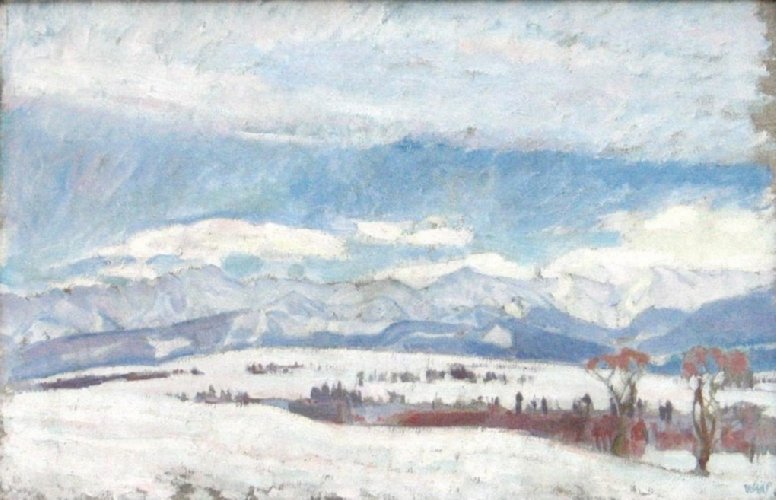Description:
Wojciech Weiss (1875-1950) was born in Romania, from where in 1888 he moved to Poland with his parents. After completing the Krakow gymnasium, he began studying at the School of Fine Arts. Numerous European trips allowed the artist to become acquainted with the contemporary artistic trends, the reception of which can be found in his work. At the age of just 23, he made his debut at the exhibition at the Warsaw Society for the Encouragement of Fine Arts, after which he was recognized as a promising talent. Over the years, he regularly exhibited his paintings, winning numerous awards. In his work, one can distinguish stylistically different periods. The first, referred to as expressionist, permeated with symbolism, was characterized by works inspired by the work of Edward Munch. The paintings painted with a dark palette were filled with unrest and pessimism. The next – the white period – takes its name from the artist‘s light research. The works of this period, painted in a light color palette, are full of joy of life. Towards the end of his life, he focused on the socialist realism trend, adapting to the current realities.
Description of the painting:
The painting “Tatry” is one of Weiss’ first works purchased by Edward Aleksander Raczyński for his collection. It was painted during a plein air with students in Bukowina Tatrzańska and Poronin. It comes from the artist’s “white” period of creativity. It depicts a monochromatic, winter mountain landscape captured on a sunny day. The composition is built up with horizontal bands that almost merge with each other. The foreground is occupied by a snow-covered plain. On the right side of the painting, a brown and gray clump of vegetation crosses the white snowfield. Two vertical elements break it up – two tall trees that emphasize the monumentality of the mountain peaks. The depth of the foreground is achieved by longitudinal horizontal strips of vegetation. The second plan occupies panorama of the mountains. The horizontal view built up by successive heights gives the impression of their three-dimensionality and gives depth. The bands are built with various shades of white, gray and pink. Above the peaks stretches the sky. Directly above them, on a blue background, clouds are visible, giving the impression of movement. The upper edge of the painting is closed with a white band.
The work fully reflects the desire to show the light phenomena that occupied Weiss at this time. The bright color palette gives the impression of lighting up the landscape, giving it lightness. He focuses particularly on showing the bends of the sun’s rays on the irregular surface of the mountain ranges. Thanks to a strongly narrowed palette of colors, the work is a study of color. The uniform, at first glance, surface of the canvas is actually a composition of many overlapping shades. The harmony of the painting invites contemplation of the view, which acts soothingly.


